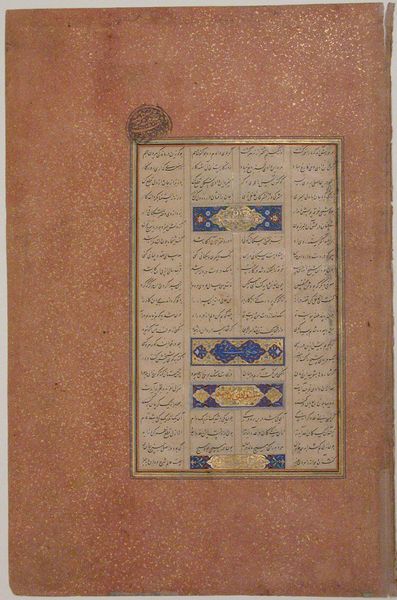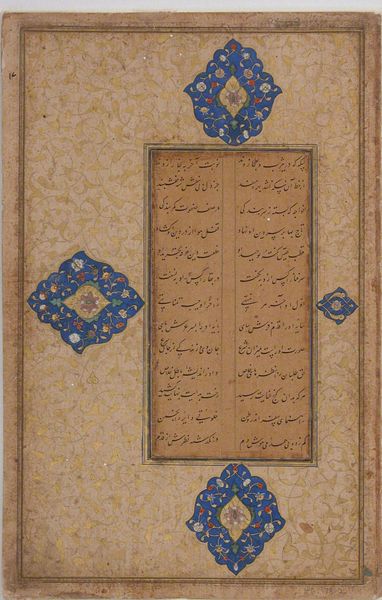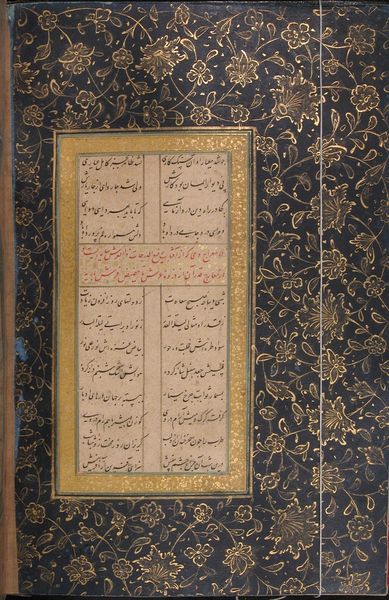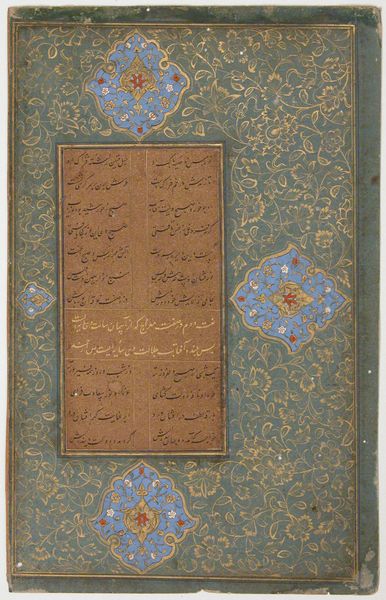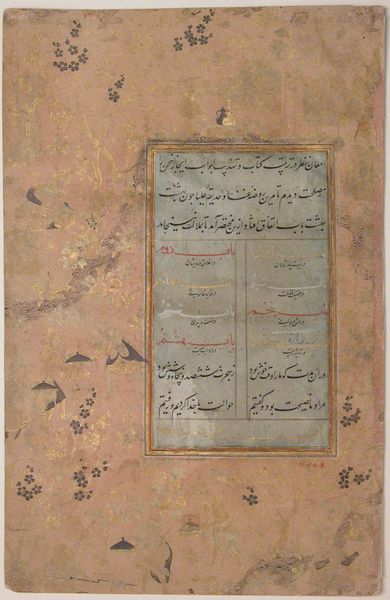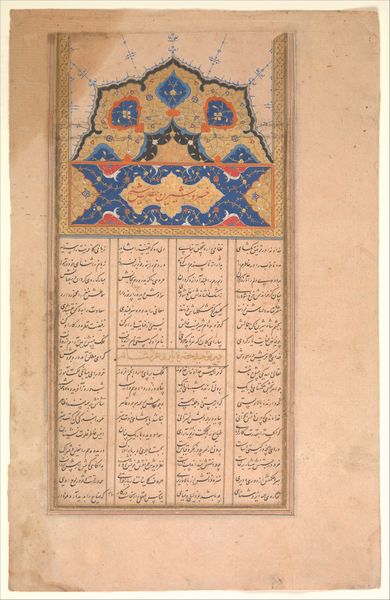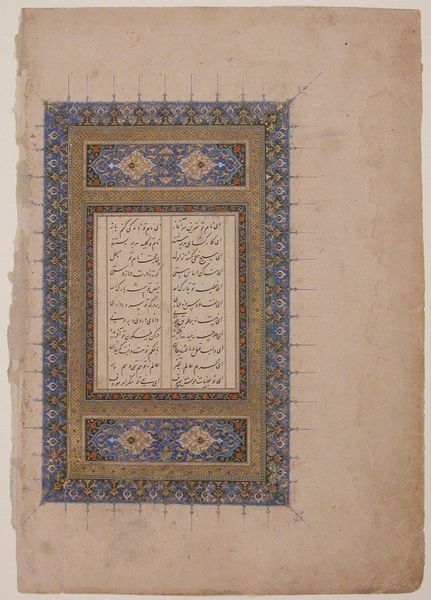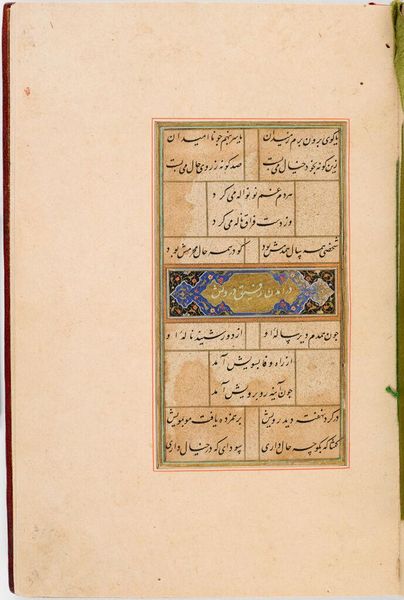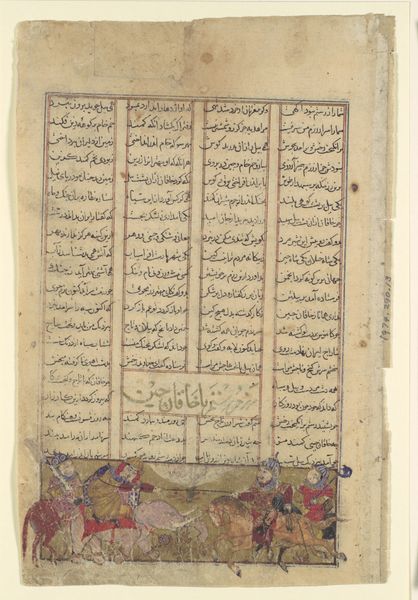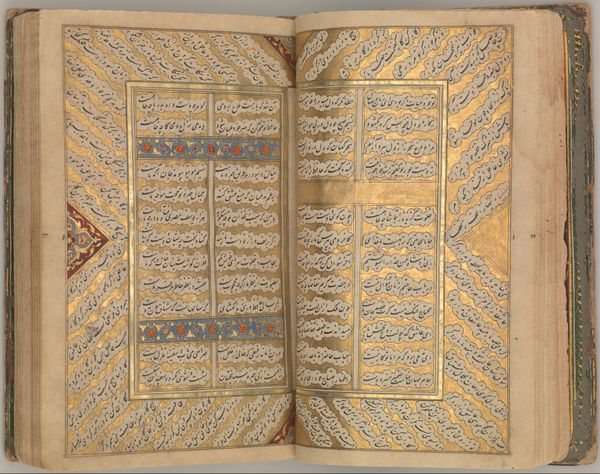
Folio from a Mantiq al-Tayr (Language of the Birds) 1461 - 1511
0:00
0:00
mixed-media, gold, textile, ink
#
mixed-media
#
water colours
#
gold
#
textile
#
ink
#
islamic-art
#
mixed media
#
miniature
#
calligraphy
Copyright: Public Domain
Curator: This is a folio from a *Mantiq al-Tayr*, or "Language of the Birds", created sometime between 1461 and 1511. It's currently housed here at the Metropolitan Museum of Art. Editor: Immediately, the ornate backdrop captures my eye, then it gives way to a series of beautifully presented lines of script. I’m curious to know the labor behind such an object. Curator: Let’s dig into that a little. The *Mantiq al-Tayr* is by Farid al-Din 'Attar, a 12th-century Persian poet. This page is a stunning example of mixed-media artistry, combining ink, watercolors, and gold on textile. What stands out is the sheer meticulousness of the work. Editor: Precisely. Think of the cultural context. Manuscript production like this would have been a highly collaborative effort. It’s also important to remember that gold leaf isn't just aesthetic; it signified wealth and status. What power dynamics were at play within the patron system that produced it? Curator: Indeed. This would involve a whole network of artisans and scribes, their labor almost invisible to us today. It also highlights a key function of art in the Islamic world: the use of calligraphy to elevate language to a visual representation of the divine. Editor: And this particular manuscript deals with complex Sufi concepts—the search for enlightenment and the divine, hidden within these carefully wrought symbols and allegories. Who would have been able to access the book in its time? Was it meant to be kept from the wider populace, to become a didactic material in an educated class? Curator: Probably both, the elite and scholarly circles would likely have been the primary audience. Editor: It definitely provokes a reflection on who dictates meaning, both then and now, in artistic expression. Curator: For me, I always appreciate the layers of process and historical reference involved. It’s more than just the sum of its materials. Editor: A powerful reminder of the ways in which visual arts are entrenched with wider political struggles for education.
Comments
No comments
Be the first to comment and join the conversation on the ultimate creative platform.
